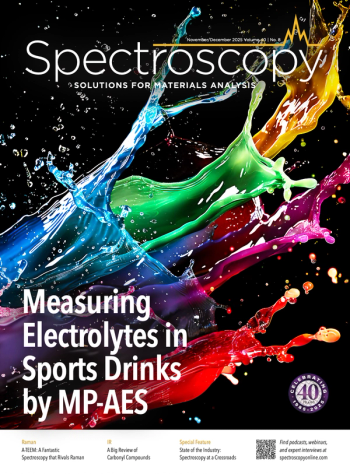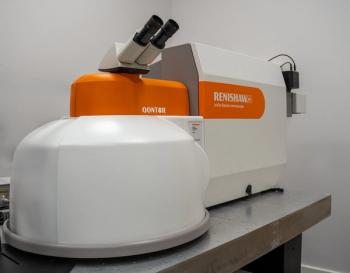Key Points
- Researchers developed a handheld NIR spectroscopy system that can accurately distinguish genuine scoured cashmere fibers from counterfeit wool, offering a fast, portable, and cost-effective alternative to traditional lab-based methods.
- Using advanced chemometric algorithms, including PLS-DA and 1D-CNN, the handheld system achieved 100% classification accuracy in tests, rivaling benchtop instruments in performance.
- The technology has major implications for the textile industry, promising real-time, on-site fiber authentication to combat fraud, reduce overhead, and improve supply chain efficiency.
In a recent study led by a team of researchers from various Chinese institutions, a new method was developed that can differentiate between genuine scoured cashmere fibers from cheaper wool fibers. This study, published in Microchemical Journal, showcases a new handheld near-infrared (NIR) spectroscopy system that could significantly enhance quality control in the global cashmere textile market, where counterfeit products made from wool continue to erode consumer trust and disrupt legitimate commerce (1).
What is cashmere?
Cashmere is a specific type of wool from goats native to central Asia (2). It is considered to be one of the softest and most luxurious types of wool in the global marketplace (2). Used to make a lot of winter gear, including jackets and sweaters, cashmere is popular among consumers. As a result, this has led to the rise of counterfeit cashmere, which is often created with lower-quality sheep wool (1).
What did the researchers do in their study?
In their study, the research team tested out a new method that overcomes the obstacles of traditional methods, which are time-consuming and require expensive instrumentation. The researchers collected a total of 416 fiber samples, which comprised of 208 scoured cashmere and 208 scoured wool samples. To analyze these samples, the researchers used both a handheld NIR device and a benchtop Fourier transform-NIR (FT-NIR) spectrometer to capture the spectral data (1). These data were then processed using advanced chemometric algorithms, including principal component analysis (PCA), partial least squares-discriminant analysis (PLS-DA), and one-dimensional convolutional neural network (1D-CNN) (1). To enhance model accuracy, the team applied competitive adaptive reweighted sampling (CARS) to select characteristic wavelengths most critical for differentiation (1).
What were the results of the study?
The researchers found that the handheld NIR system demonstrated a similar prediction accuracy to the benchtop model. Specifically, the PLS-DA model delivered 100% accuracy in distinguishing between cashmere and wool using handheld data (1). Among the analytical models tested, PLS-DA outperformed 1D-CNN in classification efficiency, which was an important observation given the relatively limited data set. Although deep learning methods like 1D-CNN hold promise for large data sets, traditional algorithms like PLS-DA remain more effective in small-scale studies (1).
What are the implications for this study?
This study has several economic implications for the textile industry. Using portable devices such as the handheld NIR system described in this study help producers keep the production costs lower. It also helps them perform fiber verification more rapidly, which has positive externalities, including higher operational efficiency and consumer trust (1).
Furthermore, the study underscores how the handheld approach can transform how businesses operate by providing results in real time. Previously, samples needed to be sent to laboratories for verification, delaying shipment approvals and increasing overhead costs (1). Now, companies can perform accurate screening within seconds, leading to faster decision-making and streamlined logistics (1).
However, Wenxin and his team also acknowledged several limitations in the study. The predictive accuracy of the models could be affected by environmental conditions like temperature and humidity, as well as sample characteristics such as animal species, color, and degree of fiber processing (1). To address these variables, the researchers suggested that future investigations can examine integrating environmental sensors and more diverse fiber databases to build more robust and adaptable models (1).
The study, therefore, does showcase a new method that could potentially improve fiber authentication. The demonstrated success of handheld NIR devices, especially when combined with the right chemometric algorithms, represents a scalable and field-ready solution for detecting counterfeit cashmere textiles (1). The textile industry is currently facing the challenge of combatting fraudulent products undercutting their industry. By using this handheld NIR system, the researchers presented a potential solution that is timely and aligns with the growing demand for speed, accuracy, and portability in quality assurance (1).
References
- Ping, G.; Yuchao, F.; Peiling, W.; et al. Rapid Identification of Scoured Protein Fibers Using Near-infrared Spectroscopy with Machine Learning: A Comparison of Handheld and Benchtop Devices. Microchem. J. 2025, 208, 112398. DOI: 10.1016/j.microc.2024.112398
- Sewport Support Team, What is Cashmere Fabric: Properties, How it’s Made and Where. Sewport. Available at: https://sewport.com/fabrics-directory/cashmere-fabric (accessed 2025-06-12).




